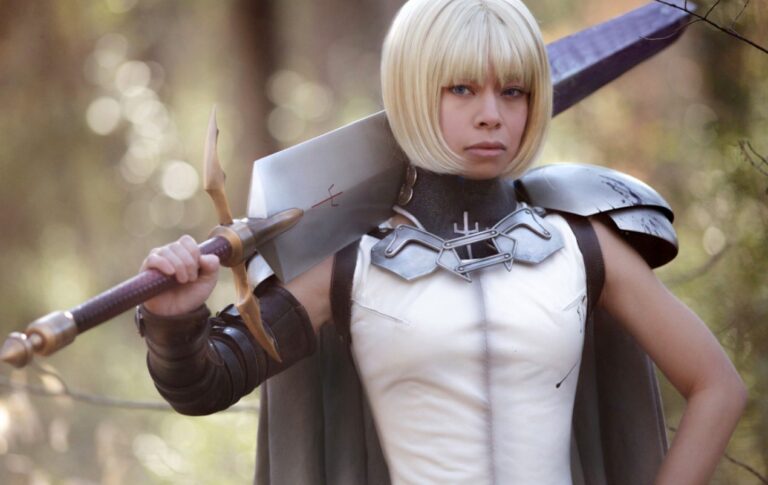The Claymore sword, often associated with the fierce Highland warriors of Scotland, is one of the most iconic weapons in history. Known for its impressive size and double-edged blade, the Claymore was a symbol of power and strength during the medieval period. In this article, we will delve into the history, characteristics, and cultural significance of the Claymore sword, exploring everything from its design to its modern-day representations.
The History of the Claymore Sword
The term “Claymore” is derived from the Gaelic word “claidheamh-mòr,” meaning “great sword.” The Claymore sword first appeared in the late medieval period, around the 15th and 16th centuries, and was primarily used by Scottish Highlanders. These swords were notably wielded during the Wars of Scottish Independence, where they became a symbol of resistance against English rule.
The Claymore sword is often associated with historical figures like William Wallace and Robert the Bruce, who were known for their role in Scotland’s fight for independence. The sword’s large size and imposing presence made it an ideal weapon for close combat, where its weight and sharpness could deliver devastating blows.
Characteristics of the Claymore Sword
Size and Length
One of the most distinguishing features of the Claymore sword is its size. The typical Claymore sword size ranges from 55 to 70 inches in length, with the blade itself measuring about 42 inches. The sword’s substantial length allowed it to be used effectively in battle, where reach and power were crucial. The Claymore sword length is often exaggerated in popular culture, but its actual size made it a formidable weapon on the battlefield.
Design and Structure
The Claymore sword is a two-handed weapon, designed to be used with both hands due to its weight and size. The hilt, or handle, of the Claymore is typically around 13 inches long, with a distinctive crossguard that flares outward in a V-shape. This design not only added to the sword’s aesthetic appeal but also provided functional benefits, such as protecting the wielder’s hands during combat.
The blade of the Claymore is double-edged, which allowed it to cut on both the upward and downward strokes. The sword’s weight, which could range from 5 to 7 pounds, required significant strength and skill to wield effectively. Despite its size, the Claymore was known for its balance, making it a highly effective weapon in skilled hands.
Real Claymore Sword vs. Fantasy Claymore Sword
When discussing the Claymore sword, it’s important to distinguish between the real Claymore sword used in historical battles and the fantasy Claymore sword often depicted in movies, video games, and literature. The real Claymore sword, as mentioned, was a practical and deadly weapon used by Scottish warriors. In contrast, the fantasy Claymore sword is often portrayed as an oversized, exaggerated version of the original, sometimes featuring elaborate designs and engravings.
While both versions hold cultural significance, the real Claymore sword is a testament to the craftsmanship and martial skills of the Scottish people. In contrast, the fantasy Claymore sword serves as a symbol of heroism and strength in fictional narratives.
The Cultural Impact of the Claymore Sword
Scottish Heritage and Symbolism
The Claymore sword is more than just a weapon; it is a symbol of Scottish heritage and pride. For many Scots, the Claymore represents the bravery and resilience of their ancestors who fought for freedom and independence. Today, the image of the Claymore is still used in Scottish regalia, clan symbols, and even on the national flag of Scotland.
Modern-Day Representations
In modern times, the Claymore sword has been immortalized in various forms of media. Whether it’s in films like “Braveheart” or video games that feature fantasy Claymore swords, this weapon continues to capture the imagination of audiences around the world. The Claymore sword next to a person in a museum or historical site often evokes a sense of awe due to its sheer size and the historical weight it carries.
For those interested in owning a piece of history, there are numerous opportunities to purchase a Claymore sword for sale. These replicas, while not battle-ready, are crafted with attention to detail, making them a popular choice for collectors and history enthusiasts alike.
Claymore Sword Tattoo
The Claymore sword has also found its way into modern body art. A Claymore sword tattoo is a popular design choice for those who wish to honor their Scottish heritage or embody the qualities of strength and bravery. These tattoos often feature the sword in its full glory, sometimes accompanied by elements like thistles or clan crests to enhance the symbolism.
Choosing the Right Claymore Sword for Sale
For collectors and enthusiasts, finding a Claymore sword for sale can be an exciting endeavor. When purchasing a Claymore, it’s essential to consider the authenticity and craftsmanship of the sword. While there are many replicas available, not all are created equal. A real Claymore sword, even as a replica, should adhere to the traditional design and size specifications.
The market offers a variety of Claymore swords, ranging from decorative pieces to functional replicas that can be used in historical reenactments. When searching for a Claymore sword for sale, it’s advisable to research the manufacturer and read reviews to ensure you are getting a high-quality product.
The Legacy of the Claymore Sword
The legacy of the Claymore sword continues to thrive, both as a historical artifact and a symbol of Scottish pride. Its imposing size, unique design, and cultural significance have cemented its place in history as one of the most legendary swords ever crafted. Whether you’re a historian, collector, or someone with an interest in Scottish culture, the Claymore sword offers a fascinating glimpse into the past.
In conclusion, the Claymore sword is more than just a weapon; it is a piece of history that embodies the spirit of a nation. From its origins on the battlefields of Scotland to its representations in modern media, the Claymore remains an enduring symbol of power, resilience, and heritage.

